Abstract
OBJECTIVES--To examine the efficacy of routine examination of multiple causes of death occurring on death certificates in cohort studies, with an example from the oil industry. METHODS--The underlying and multiple causes were coded for all notified deaths from a cohort of 35,000 men employed at eight oil refineries in the United Kingdom. Matrices of the frequencies of underlying causes by contributory causes were analysed for the total population and by subgroups defined by refinery, occupation, age, and calendar period of death. RESULTS--Over 75% of the 10,128 certificates had two or more causes but this varied by disease. Many ratios of mentions of total to underlying causes were similar to those of England and Wales. Ratios for cancer of the larynx and pneumonia were lower, indicating possible over-reporting of these diseases as the underlying cause. Investigation of an excess of pneumonia deaths at one refinery indicated possible miscoding of the underlying cause or the wrong position of pneumonia on some certificates, particularly in combination with malignancy and stroke. CONCLUSIONS--Routine analysis of multiple causes of death can provide useful additional information in cohort studies.
Full text
PDF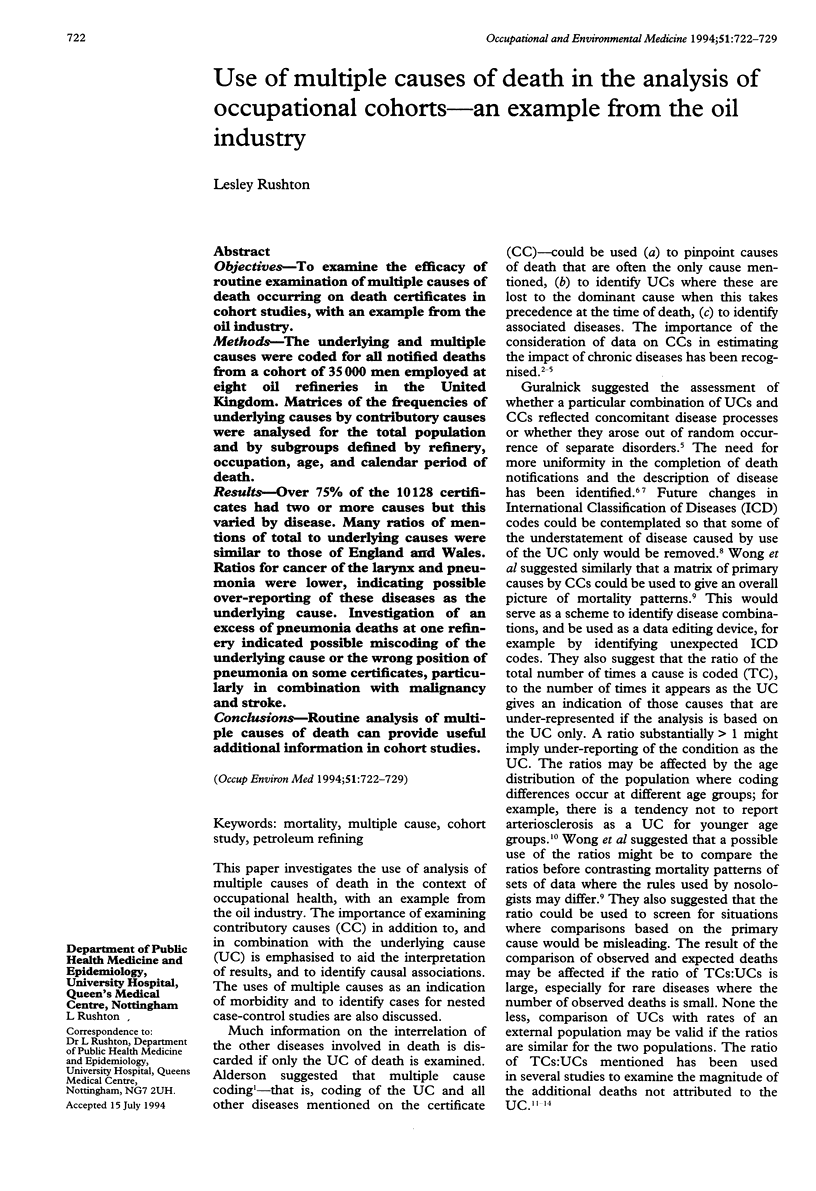
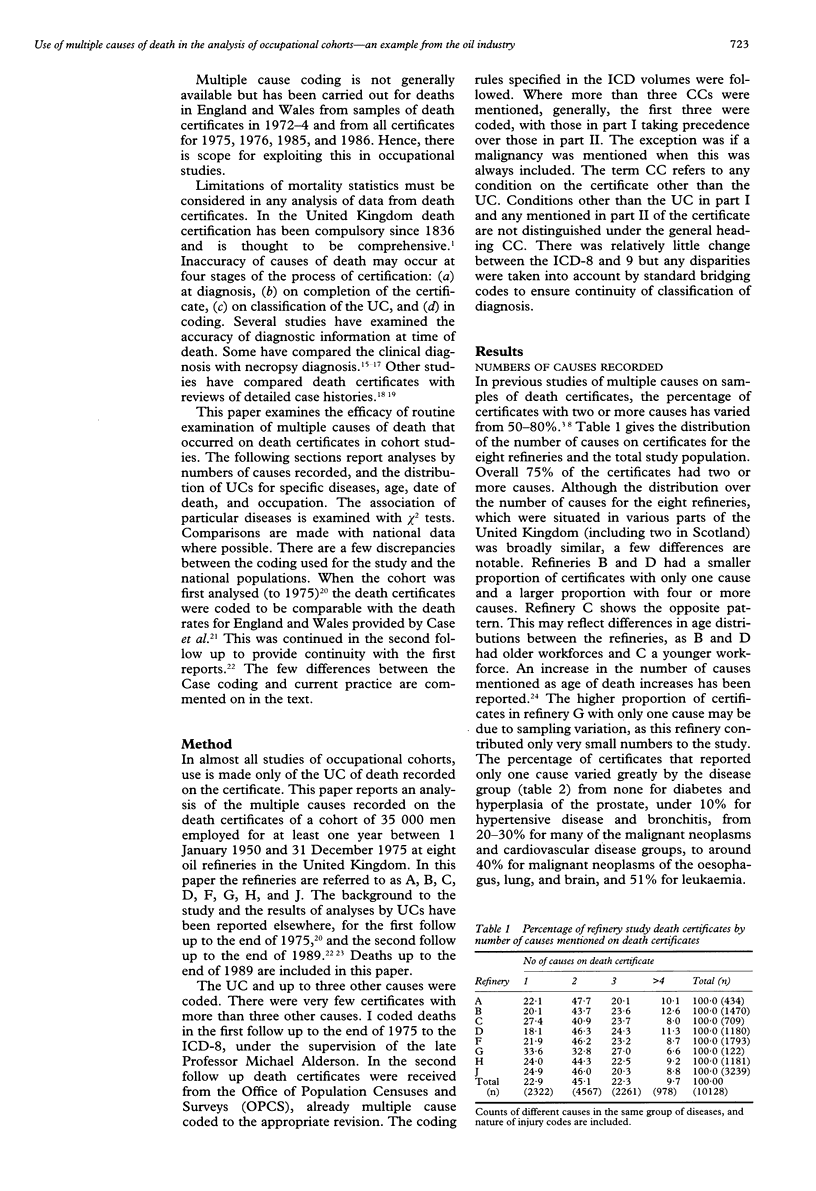
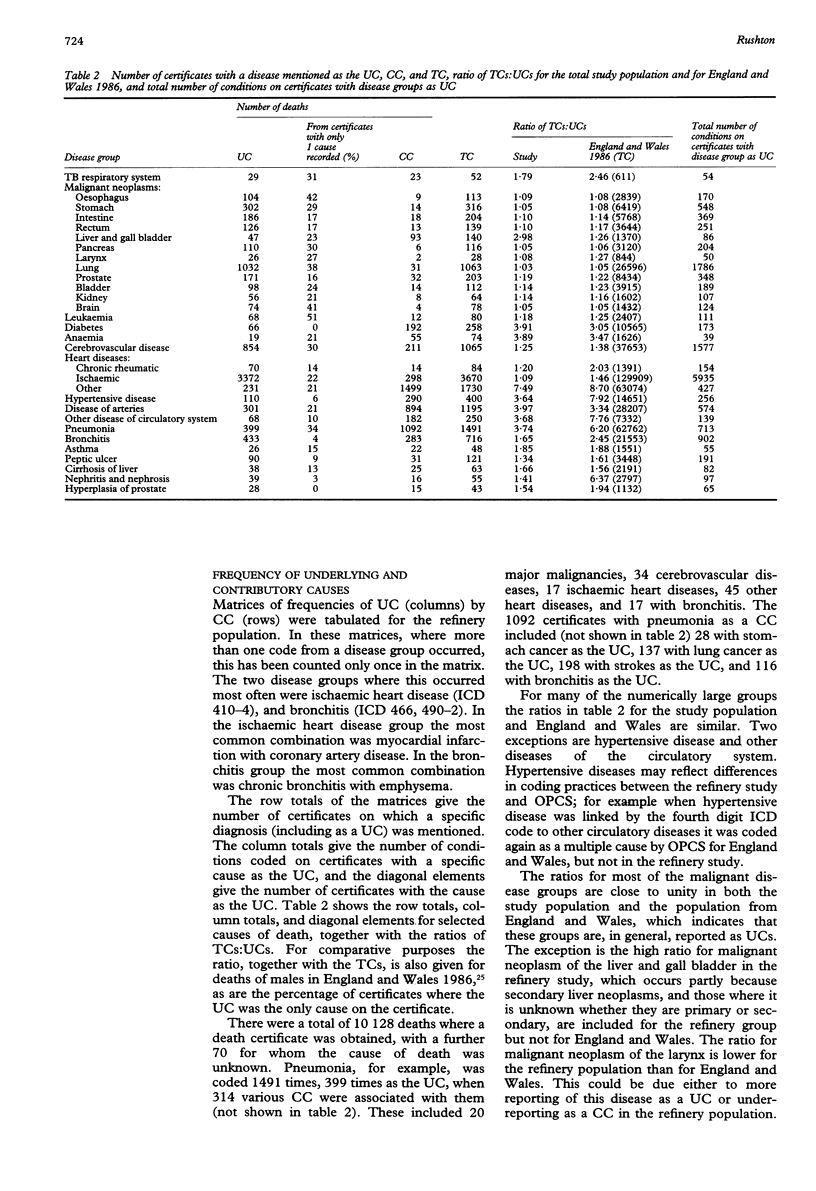
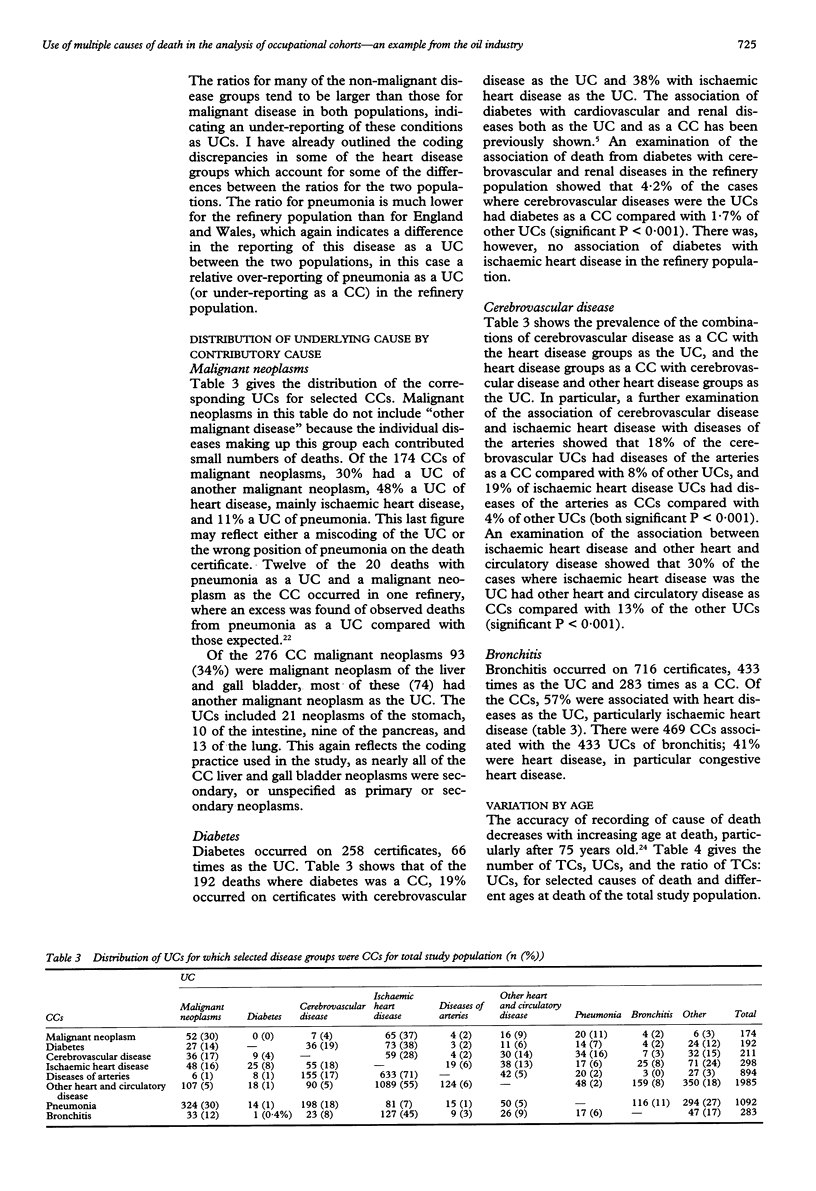
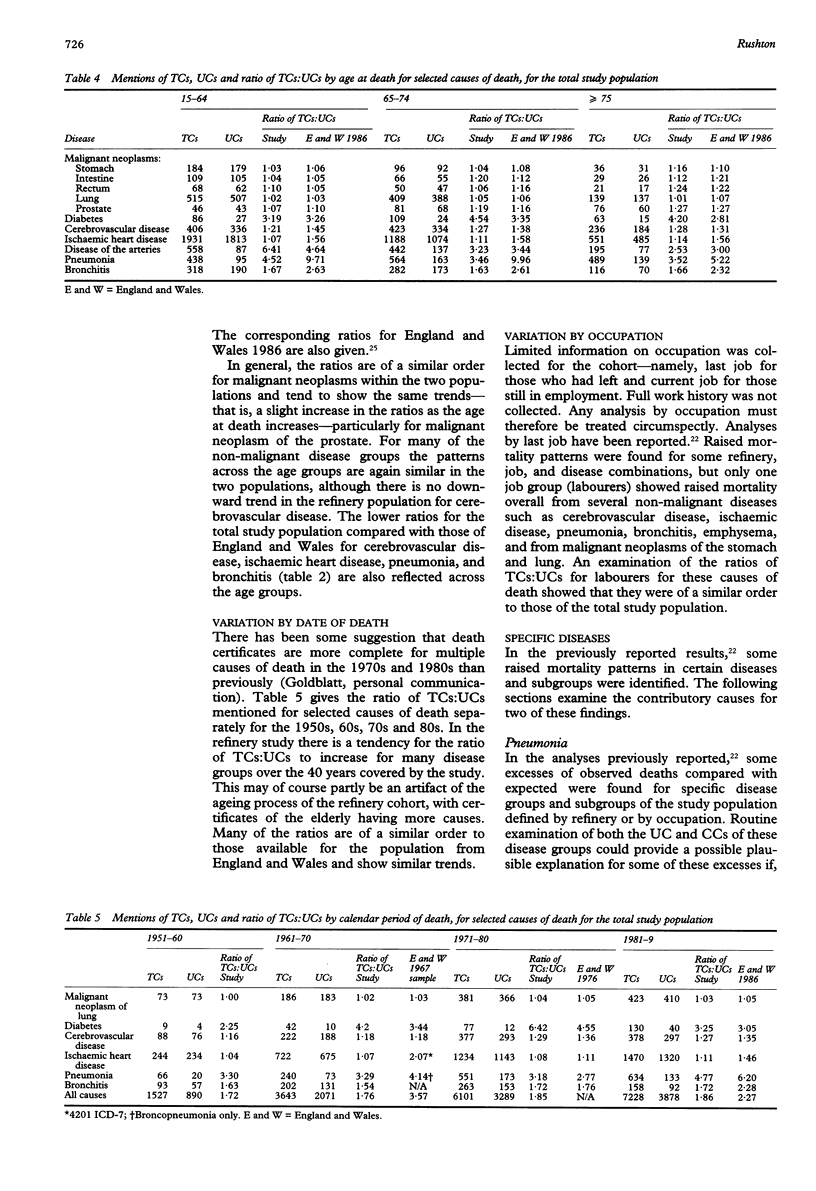
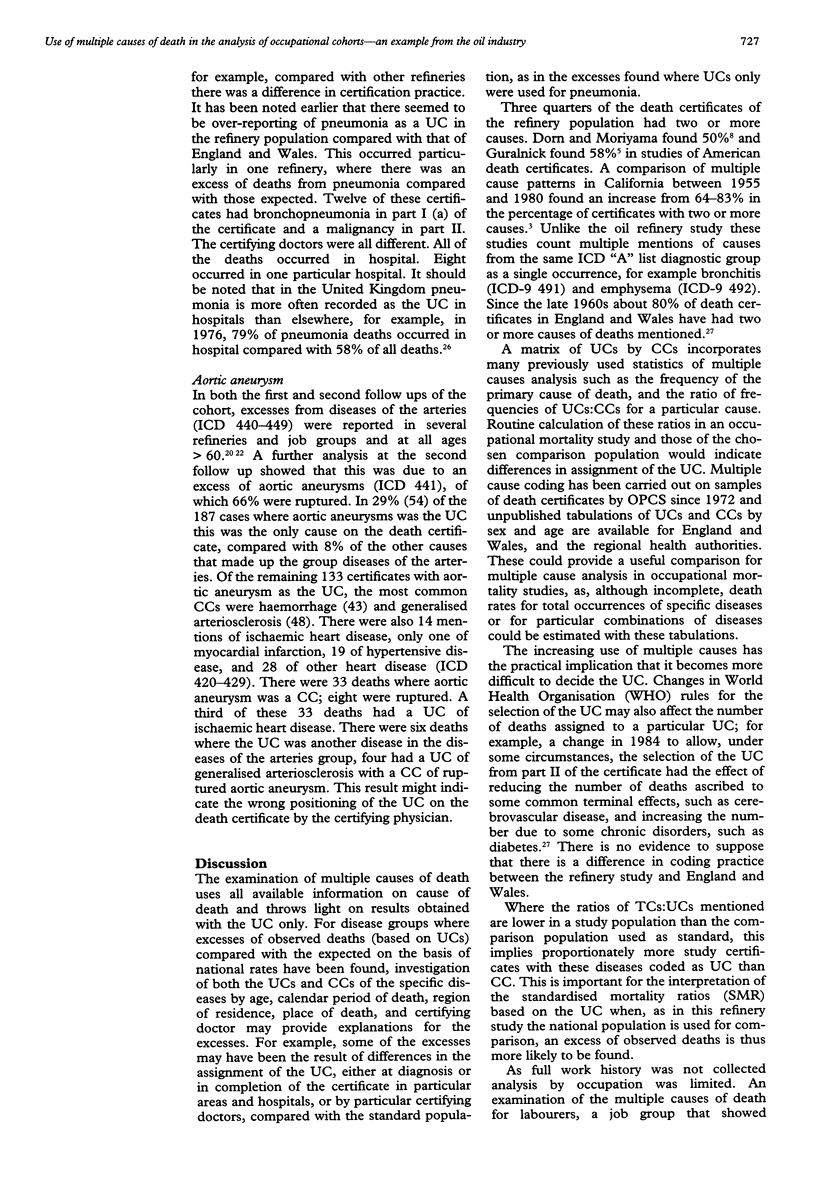
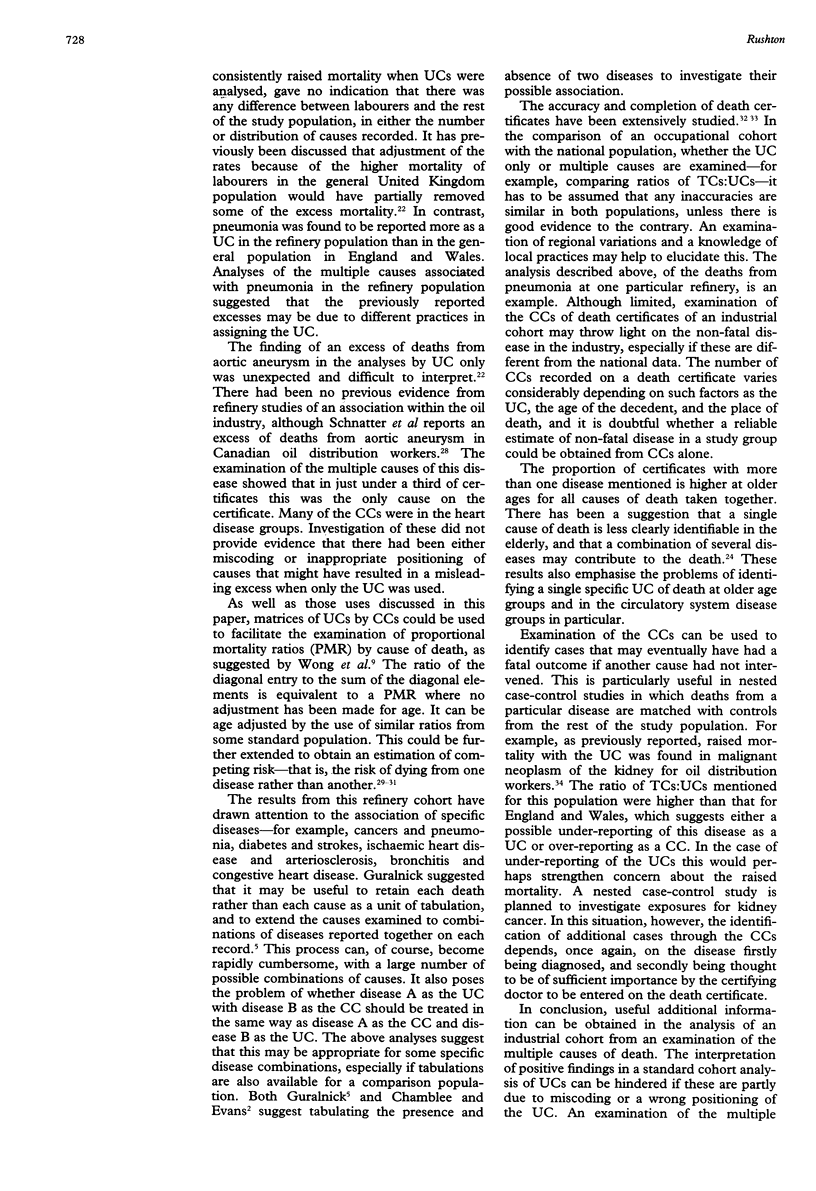
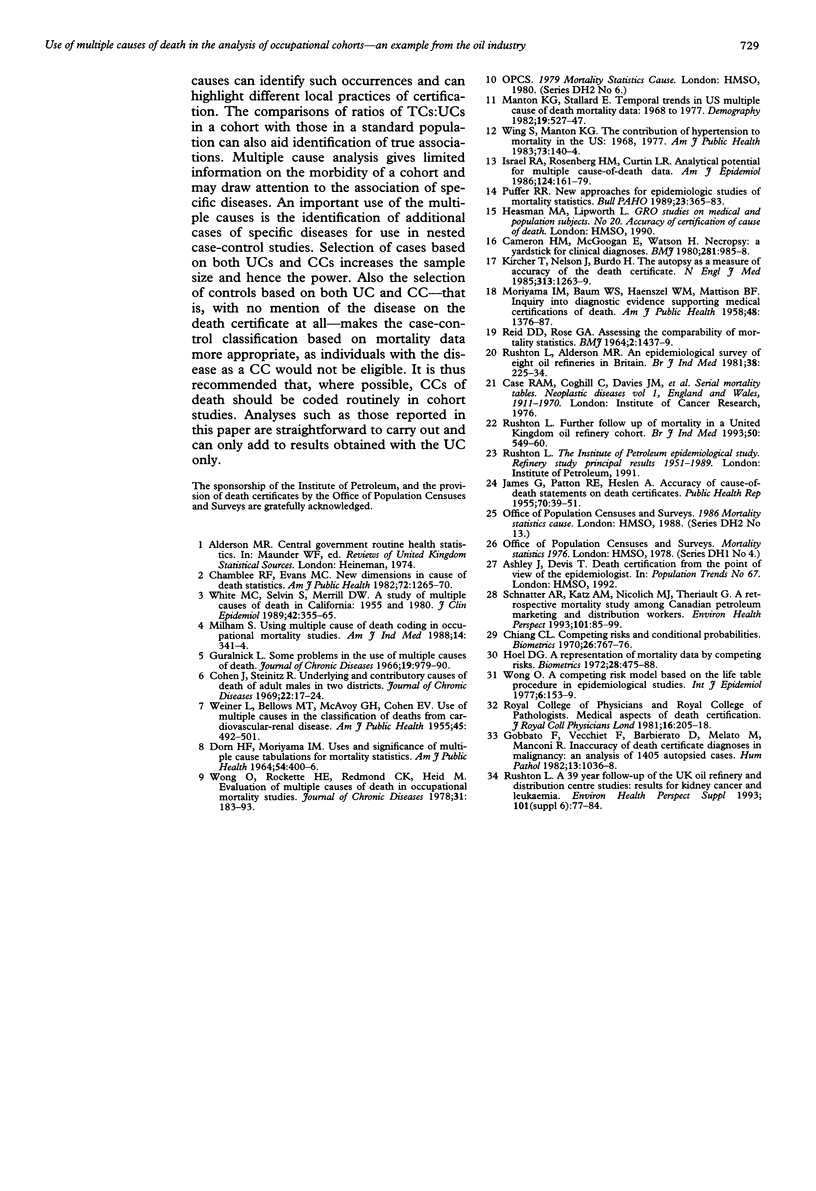
Selected References
These references are in PubMed. This may not be the complete list of references from this article.
- Cameron H. M., McGoogan E., Watson H. Necropsy: a yardstick for clinical diagnoses. Br Med J. 1980 Oct 11;281(6246):985–988. doi: 10.1136/bmj.281.6246.985. [DOI] [PMC free article] [PubMed] [Google Scholar]
- Chamblee R. F., Evans M. C. New dimensions in cause of death statistics. Am J Public Health. 1982 Nov;72(11):1265–1270. doi: 10.2105/ajph.72.11.1265. [DOI] [PMC free article] [PubMed] [Google Scholar]
- Cohen J., Steinitz R. Underlying and contributory causes of death of adult males in two districts. J Chronic Dis. 1969 Jun;22(1):17–24. doi: 10.1016/0021-9681(69)90083-6. [DOI] [PubMed] [Google Scholar]
- DORN H. F., MORIYAMA I. M. USES AND SIGNIFICANCE OF MULTIPLE CAUSE TABULATIONS FOR MORTALITY STATISTICS. Am J Public Health Nations Health. 1964 Mar;54:400–406. doi: 10.2105/ajph.54.3.400. [DOI] [PMC free article] [PubMed] [Google Scholar]
- Gobbato F., Vecchiet F., Barbierato D., Melato M., Manconi R. Inaccuracy of death certificate diagnoses in malignancy: an analysis of 1,405 autopsied cases. Hum Pathol. 1982 Nov;13(11):1036–1038. doi: 10.1016/s0046-8177(82)80096-8. [DOI] [PubMed] [Google Scholar]
- Guralnick L. Some problems in the use of multiple causes of death. J Chronic Dis. 1966 Sep;19(9):979–990. doi: 10.1016/0021-9681(66)90031-2. [DOI] [PubMed] [Google Scholar]
- Hoel D. G. A representation of mortality data by competing risks. Biometrics. 1972 Jun;28(2):475–488. [PubMed] [Google Scholar]
- Israel R. A., Rosenberg H. M., Curtin L. R. Analytical potential for multiple cause-of-death data. Am J Epidemiol. 1986 Aug;124(2):161–179. doi: 10.1093/oxfordjournals.aje.a114375. [DOI] [PubMed] [Google Scholar]
- JAMES G., PATTON R. E., HESLIN A. S. Accuracy of cause-of-death statements on death certificates. Public Health Rep. 1955 Jan;70(1):39–51. [PMC free article] [PubMed] [Google Scholar]
- Kircher T., Nelson J., Burdo H. The autopsy as a measure of accuracy of the death certificate. N Engl J Med. 1985 Nov 14;313(20):1263–1269. doi: 10.1056/NEJM198511143132005. [DOI] [PubMed] [Google Scholar]
- MORIYAMA I. M., BAUM W. S., HAENSZEL W. M., MATTISON B. F. Inquiry into diagnostic evidence supporting medical certifications of death. Am J Public Health Nations Health. 1958 Oct;48(10):1376–1387. doi: 10.2105/ajph.48.10.1376. [DOI] [PMC free article] [PubMed] [Google Scholar]
- Manton K. G., Stallard E. Temporal trends in U. S. multiple cause of death mortality data: 1968 to 1977. Demography. 1982 Nov;19(4):527–547. [PubMed] [Google Scholar]
- Milham S., Jr Using multiple cause of death coding in occupational mortality studies. Am J Ind Med. 1988;14(3):341–344. doi: 10.1002/ajim.4700140311. [DOI] [PubMed] [Google Scholar]
- Puffer R. R. New approaches for epidemiologic studies of mortality statistics. Bull Pan Am Health Organ. 1989;23(4):365–383. [PubMed] [Google Scholar]
- REID D. D., ROSE G. A. ASSESSING THE COMPARABILITY OF MORTALITY STATISTICS. Br Med J. 1964 Dec 5;2(5422):1437–1439. doi: 10.1136/bmj.2.5422.1437. [DOI] [PMC free article] [PubMed] [Google Scholar]
- Rushton L. A 39-year follow-up of the U.K. oil refinery and distribution center studies: results for kidney cancer and leukemia. Environ Health Perspect. 1993 Dec;101 (Suppl 6):77–84. doi: 10.1289/ehp.93101s677. [DOI] [PMC free article] [PubMed] [Google Scholar]
- Rushton L., Alderson M. R. An epidemiological survey of eight oil refineries in Britain. Br J Ind Med. 1981 Aug;38(3):225–234. doi: 10.1136/oem.38.3.225. [DOI] [PMC free article] [PubMed] [Google Scholar]
- Rushton L. Further follow up of mortality in a United Kingdom oil refinery cohort. Br J Ind Med. 1993 Jun;50(6):549–560. doi: 10.1136/oem.50.6.549. [DOI] [PMC free article] [PubMed] [Google Scholar]
- Schnatter A. R., Katz A. M., Nicolich M. J., Thériault G. A retrospective mortality study among Canadian petroleum marketing and distribution workers. Environ Health Perspect. 1993 Dec;101 (Suppl 6):85–99. doi: 10.1289/ehp.93101s685. [DOI] [PMC free article] [PubMed] [Google Scholar]
- WEINER L., BELLOWS M. T., McAVOY G. H., COHEN E. V. Use of multiple causes in the classification of deaths from cardiovascular-renal disease. Am J Public Health Nations Health. 1955 Apr;45(4):492–501. doi: 10.2105/ajph.45.4.492. [DOI] [PMC free article] [PubMed] [Google Scholar]
- White M. C., Selvin S., Merrill D. W. A study of multiple causes of death in California: 1955 and 1980. J Clin Epidemiol. 1989;42(4):355–365. doi: 10.1016/0895-4356(89)90040-1. [DOI] [PubMed] [Google Scholar]
- Wing S., Manton K. G. The contribution of hypertension to mortality in the US: 1968, 1977. Am J Public Health. 1983 Feb;73(2):140–144. doi: 10.2105/ajph.73.2.140. [DOI] [PMC free article] [PubMed] [Google Scholar]
- Wong O. A competing-risk model based on the life table procedure in epidemiological studies. Int J Epidemiol. 1977 Jun;6(2):153–159. doi: 10.1093/ije/6.2.153. [DOI] [PubMed] [Google Scholar]
- Wong O., Rockette H. E., Redmond C. K., Heid M. Evaluation of multiple causes of death in occupational mortality studies. J Chronic Dis. 1978 Mar;31(3):183–193. doi: 10.1016/0021-9681(78)90033-4. [DOI] [PubMed] [Google Scholar]


